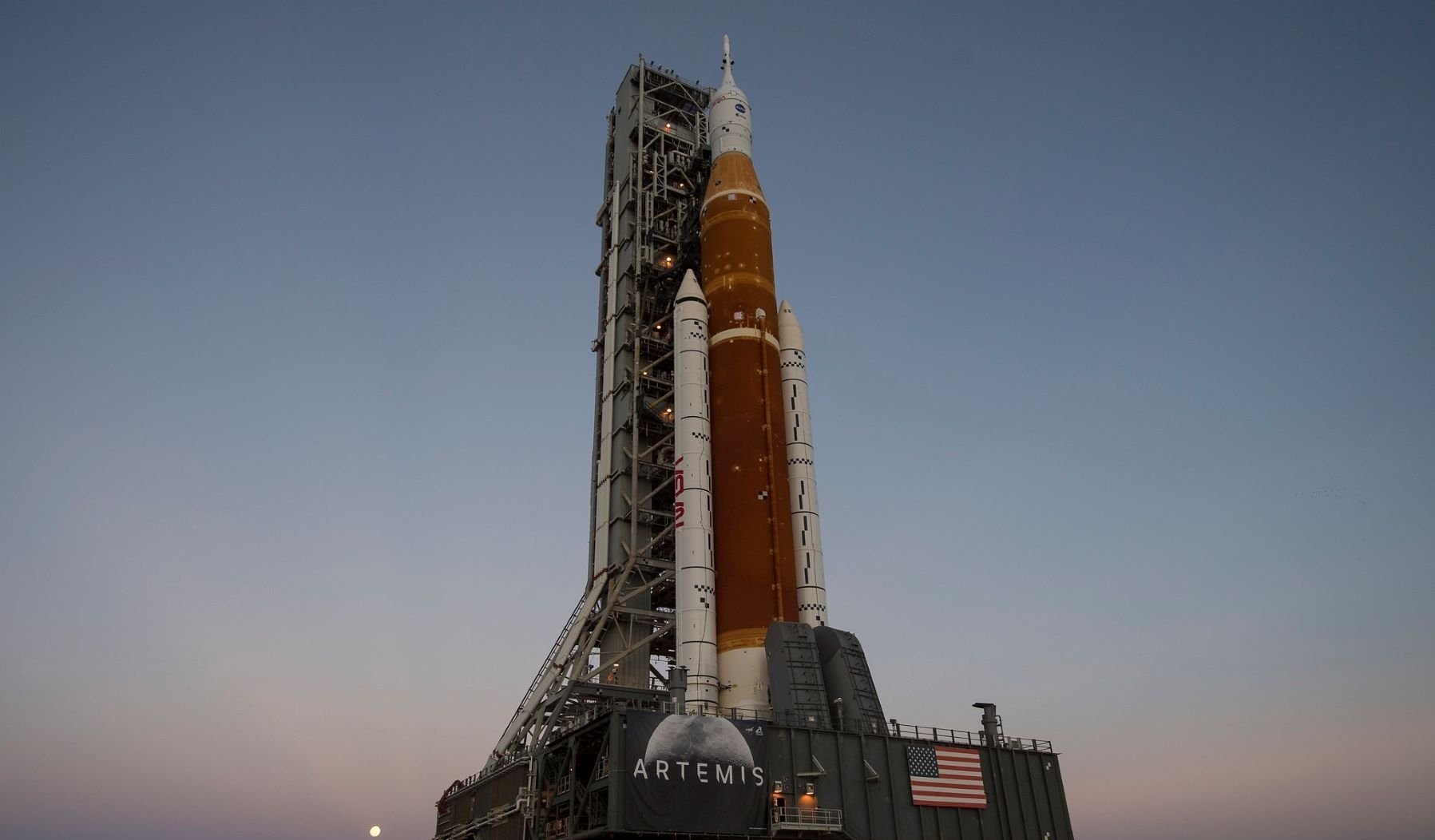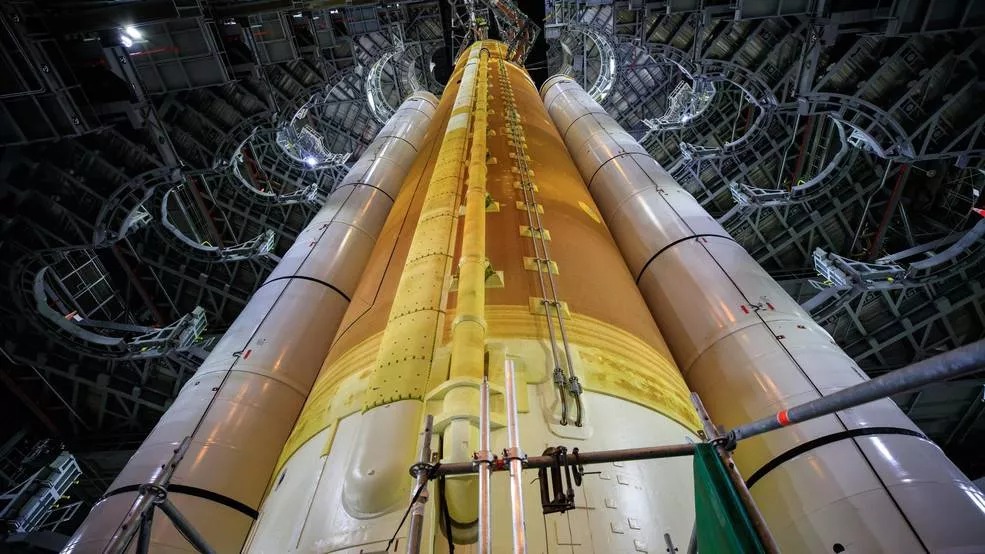NASA has shared a close-up video of its next-generation Space Launch System (SLS) lunar rocket during recent tests ahead of its first flight. The 33 Raptor engines located at the base of the accelerator have already amazed us when they were demonstrated from an unusual angle. But the video footage allows us to understand how some parts of the rocket will function during the upcoming flight.

The video shows how the nozzles at the base of the lunar accelerator rocket are able to move, which helps the SLS to keep its course and maintain stability during flight. NASA explains: “Most modern rockets are converted to create a control moment. In the gimbal thrust system, the rocket exhaust nozzle can be rotated from side to side. As the nozzle moves, the thrust direction changes relative to the rocket’s center of gravity.”
Check out @NASA_SLS ‘s engines running through their paces during the @NASAArtemis wet dress rehearsal test.
Now that the test is complete, the @NASAGroundSys team will complete final checkouts before rolling to the pad for launch. pic.twitter.com/HsHydLoY81
— NASA’s Kennedy Space Center (@NASAKennedy) July 10, 2022
Here is another video demonstrating the maneuverability of the engine injectors, filmed during the same test:
???????? Newly-released video shows @NASA_SLS rocket engine gimballing during the final wet dress rehearsal testing for Artemis I. As the engine nozzle is moved, the direction of the thrust is changed relative to the center of gravity of the rocket.
VIDEO: https://go.nasa.gov/3bYWoNA pic.twitter.com/BFyutk0dPG— NASA’s Exploration Ground Systems (@NASAGroundSys) July 8, 2022
The most powerful rocket in the history of mankind
The NASA SLS accelerator uses four RS-25 engines. The Space Launch System is one of the most powerful rockets ever created by mankind, and is a key part of NASA’s Artemis program, which aims to deliver the first woman and the first African–American to the surface of the Moon as early as 2025.

Preparing for the first flight of the rocket, expected to take place in the next few months, NASA recently completed the so-called “wet dress rehearsal” of the device after an unsuccessful attempt in April. The rehearsal involved filling the rocket’s fuel tanks and performing a simulated countdown to make sure all systems were working properly. During testing, there were several relatively minor problems. Currently, engineers are working on their elimination.
Other final preparations are also underway ahead of the long-awaited first flight, during which the SLS rocket will send the Orion spacecraft without a crew to fly around the Moon as part of the Artemis I mission. The Artemis II mission will be almost the same, but with astronauts on board. Meanwhile, Artemis III will return astronauts to the surface of the Moon for the first time in 50 years.
Earlier, SpaceX Raptor engines were compared to an army of killer robots.
Follow us on Twitter to get the most interesting space news in time
https://twitter.com/ust_magazine

